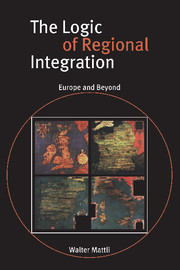2 - A review of theoretical approaches to integration
Published online by Cambridge University Press: 06 July 2010
Summary
Introduction
Regional integration has been on the research agenda of social scientists at various times over the past fifty years (see table 2.1). Most political scientists studying integration have been primarily interested in understanding the institutional and policy dimensions of integration. They have sought to specify the political context in which integration occurs and have provided insightful accounts of the process of integration. One explanation of integration in political science is neofunctionalism. It refines the conceptual tools of its predecessor theory, functionalism, and embeds them in a rigorous utilitarian framework. It starts by assuming that supranationality is the only method available to states to secure maximum welfare and then offers a subtle account of how integration unfolds over time, using concepts such as functional spillover, updating of common interest, and subnational and supranational group dynamics. Intergovernmentalism is a contending analytical approach to integration. It is in most respects contrary to neofunctionalist premises. Integration is viewed as a sequence of interstate bargains triggered by a convergence of policy preferences among states. It serves to maximize states' wealth and power.
Economists have focused primarily on market relationships among goods and factors of production within a region and have assumed away the relevance of institutional and political forces. Economic explanations are positive theories of welfare gains and losses associated with regional integration, not explanations of the political choices that produce integrated areas.
- Type
- Chapter
- Information
- The Logic of Regional IntegrationEurope and Beyond, pp. 19 - 40Publisher: Cambridge University PressPrint publication year: 1999



